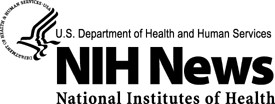| Study Casts Doubt on Lung Treatment
for Preterm Infants
Contrary to an earlier finding, inhaled nitric oxide
therapy (a treatment for lung problems in premature
infants) does not reduce the infant’s chances for death
or further lung problems, according to a study by the
National Institute of Child Health and Human Development
of the National Institutes of Health. The study appears
in the July 7 New England Journal of Medicine.
“Premature infants weighing less than 1500 grams should
not receive inhaled nitric oxide therapy unless they
are part of a research study,” said NICHD Director Duane
Alexander, M.D.
Inhaled nitric oxide therapy is effective for treating
full term infants with lung complications. In term infants,
whose lungs are fully formed, these complications typically
result from lung infection. For the treatment, nitric
oxide gas is mixed with oxygen and given to an infant
through a breathing apparatus. The treatment makes the
blood vessels in the lung tissue relax, allowing the
lungs to absorb oxygen more easily.
Because the treatment works well for term infants,
researchers had been interested in its possible use
to treat lung complications in preterm infants. Earlier
research in preterm infants treated with inhaled nitric
oxide therapy showed varied results.
A team of researchers with NICHD’s Neonatal Research
Network enrolled 420 infants born at less than 34 weeks’ gestation,
weighing between 401 to 1500 grams (14 ounces to 3 pounds,
2 ounces). All infants required assisted ventilation
and had a diagnosis of respiratory distress syndrome,
sepsis or pneumonia, or other severe breathing problems.
The infants were randomly assigned to receive either
inhaled nitric oxide or a placebo.
The researchers found that there was no difference
between the infants who received the inhaled nitric
oxide and those who did not: 60 percent of the infants
who received it and 68 percent of those who did not,
developed bronchopulmonary dysplasia, a serious lung
condition involving lung inflammation and scarring.
Both groups also had high death rates (52 percent in
the inhaled nitric oxide group and 44 percent in the
placebo group).
While earlier research on the use of inhaled nitric
oxide on premature infants with breathing problems showed
potential benefits of the therapy, the infants in that
research study were larger and less critically ill than
those in the current study.
“Contrary to our hopes as neonatologists, inhaled nitric
oxide treatment did not reduce the incidence of death
or further lung problems,” said one of the study’s authors,
Rosemary Higgins, M.D., of the NICHD’s Pregnancy and
Perinatology Branch. “The smallest and sickest infants
were not helped by this treatment.”
Dr. Higgins added that the smaller infants presumable
were unable to benefit from inhaled nitric oxide therapy
because their lungs were not sufficiently developed.
After the study was completed, the researchers took
a closer look at the data. Such after-the-fact analyses,
conducted after a study has taken place, typically need
to be confirmed by further research. This second look
at the data revealed information about various subgroups
of the study. The researchers found that infant weight
affected the outcome among infants receiving inhaled
nitric oxide. Infants in this group weighing between
1000 and 1500 grams had a significantly lower death
rate than infants in the placebo group. Infants weighing
less than 1000 grams in this group had a higher death
rate than those in the placebo group.
In addition, infants receiving inhaled nitric oxide
through conventional mechanical ventilation had a higher
mortality rate than those receiving the therapy through
high-frequency ventilation. Conventional mechanical
ventilation resembles the inhaling and exhaling motion
of normal breathing. In contrast, high frequency ventilation
consists of numerous soft pulses delivered to the lungs.
One of the main concerns in the past of using inhaled
nitric oxide to treat premature infants who have lung
problems is that this treatment may trigger intracranial
bleeding — bleeding inside the brain. Data analysis after
the study showed that the smaller premature infants
in the treatment group — a subset of those weighing less
than 1000 grams — had a higher rate of intracranial bleeding
than infants in the placebo group.
“We have more work to do to better understand how to
best help premature infants with severe lung problems,” Dr.
Higgins said.
The NICHD is part of the National Institutes of Health
(NIH), the biomedical research arm of the federal government.
NIH is an agency of the U.S. Department of Health and
Human Services. The NICHD sponsors research on development,
before and after birth; maternal, child, and family
health; reproductive biology and population issues;
and medical rehabilitation.
The National Institutes of Health (NIH) — The
Nation's Medical Research Agency — is comprised
of 27 Institutes and Centers and is a component of
the U. S. Department of Health and Human Services.
It is the primary Federal agency for conducting and
supporting basic, clinical, and translational medical
research, and investigates the causes, treatments,
and cures for both common and rare diseases. For more
information about NIH and its programs, visit www.nih.gov. |

